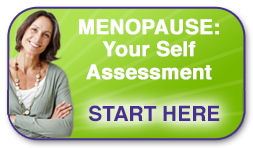On July 9, 2012, 15 major medical organizations, including the North American Menopause Society (NAMS), the American Society for Reproductive Medicine (ASRM) and the Endocrine Society issued a joint statement affirming that hormone therapy is still an acceptable treatment for menopausal symptoms. In December 2013, the American College of OB/GYN updated its Practice Guidelines regarding vasomotor symptoms and vaginal atrophy. A summary of the latest recommendations on hormone therapy are listed below to help you make the most informed decision possible :
- Hormone therapy remains the most effective treatment available for menopausal symptoms, including hot flashes and night sweats.
- If you have had blood clots, heart disease, stroke or breast cancer, you may not want to use hormone therapy. Be sure to discuss all your existing health conditions with your OB/GYN or healthcare provider when talking about hormone therapy.
- The length of time to safely take hormone therapy varies for estrogen progestin therapy (EPT) vs. estrogen therapy (ET). For EPT, limit your use to 3-5 years due to the increased risk for breast cancer. The risk decreases after hormone therapy is stopped. For ET, you can take it for up to 7 years, as no sign of an increased risk for breast cancer was seen during that treatment time.
- If you are healthy and under the age of 60, you will have no increase in the risk of heart disease with hormone therapy. However, the risks of stroke and blood clots in the lungs are increased, similar to the risks found when using birth control pills.
- If your symptoms are limited to vaginal dryness or discomfort, you should consider using low dosages of local vaginal estrogen. If you also have hot flashes, low-dose and ultra-low systemic doses of estrogen have a more favorable adverse effect profile.
- While all the research evidence is not yet available, estrogen therapy (ET) that is delivered transdermally (through the skin) by patch, cream, gel or spray and low-dose oral estrogen may have lower risks of blood clots and stroke than standard doses of oral estrogen.
- Both oral and transdermal hormone therapy resulted in an increase in vaginal lubrication and a decrease in painful sexual intercourse for women.
- Transdermal hormone therapy was associated with improved libido-related aspects, such as desire, arousal and orgasm.
- There is more evidence to support nonhormonal alternatives though additional long term data is needed.
Overall, the latest research shows that hormone therapy is a reasonable option for many women, but not for all. It depends on the extent and severity of symptoms and how everyday life is affected. When making the decision to use hormone therapy, factors such as family history, symptom severity, age and time since menopause began, preexisting health conditions, your lifestyle and method of administration should all be considered. Talk with your OB/GYN or healthcare provider about the importance of individualized care and personalized decision making. Together, you can weigh your risks and benefits to allow you to make the most informed decision possible.


